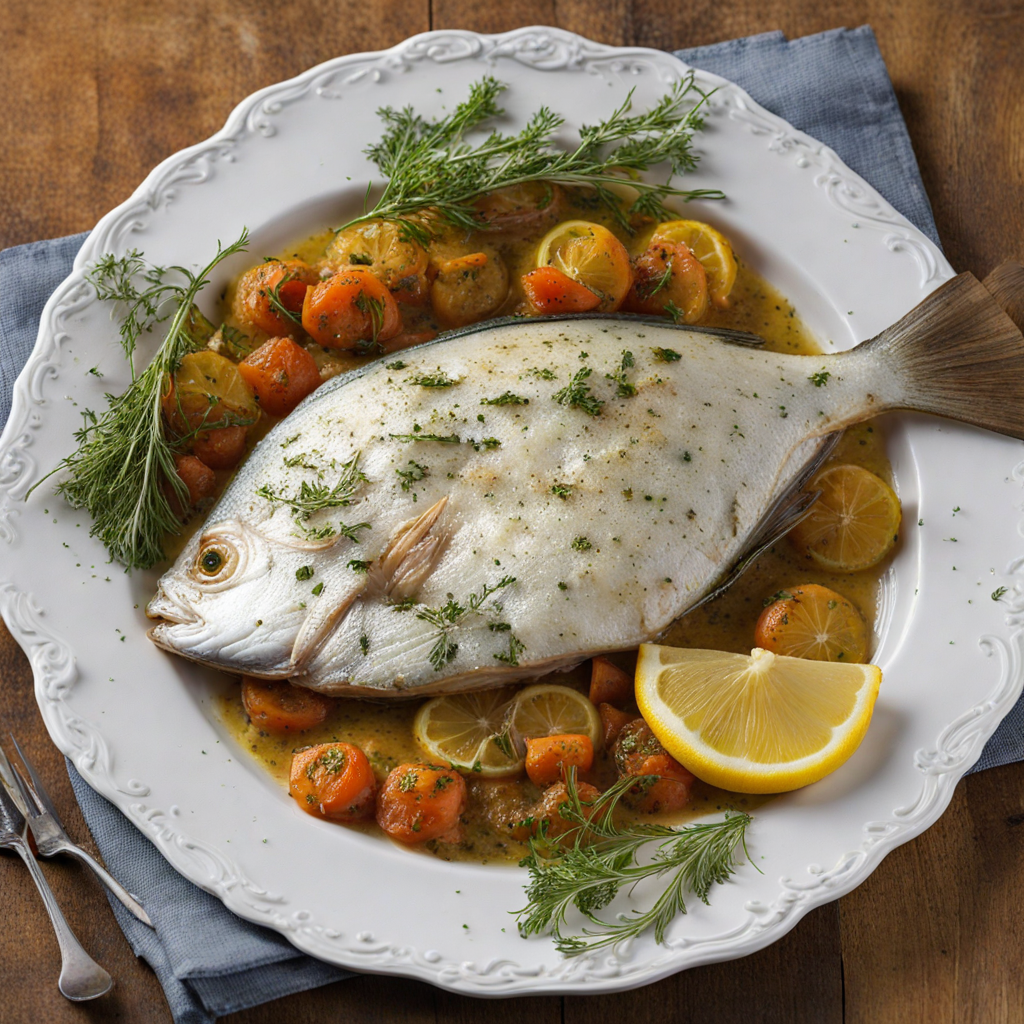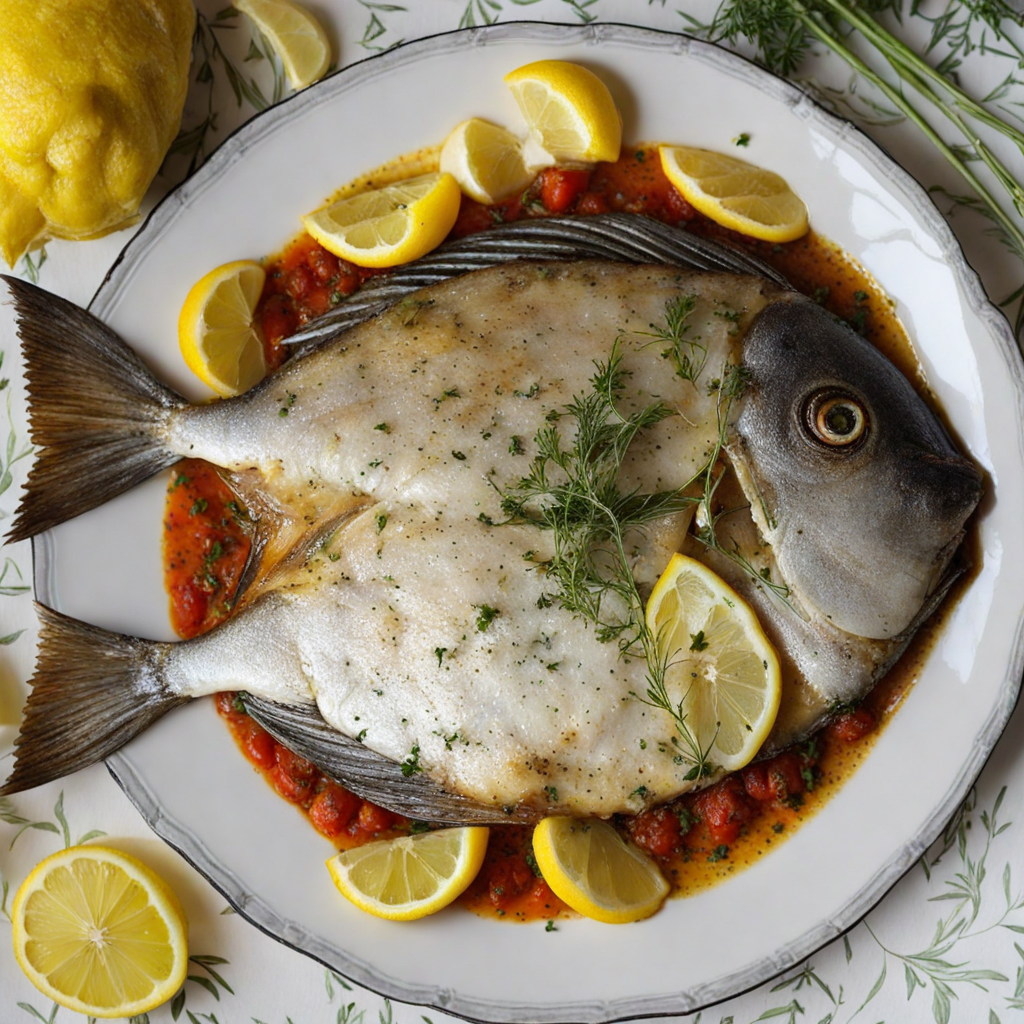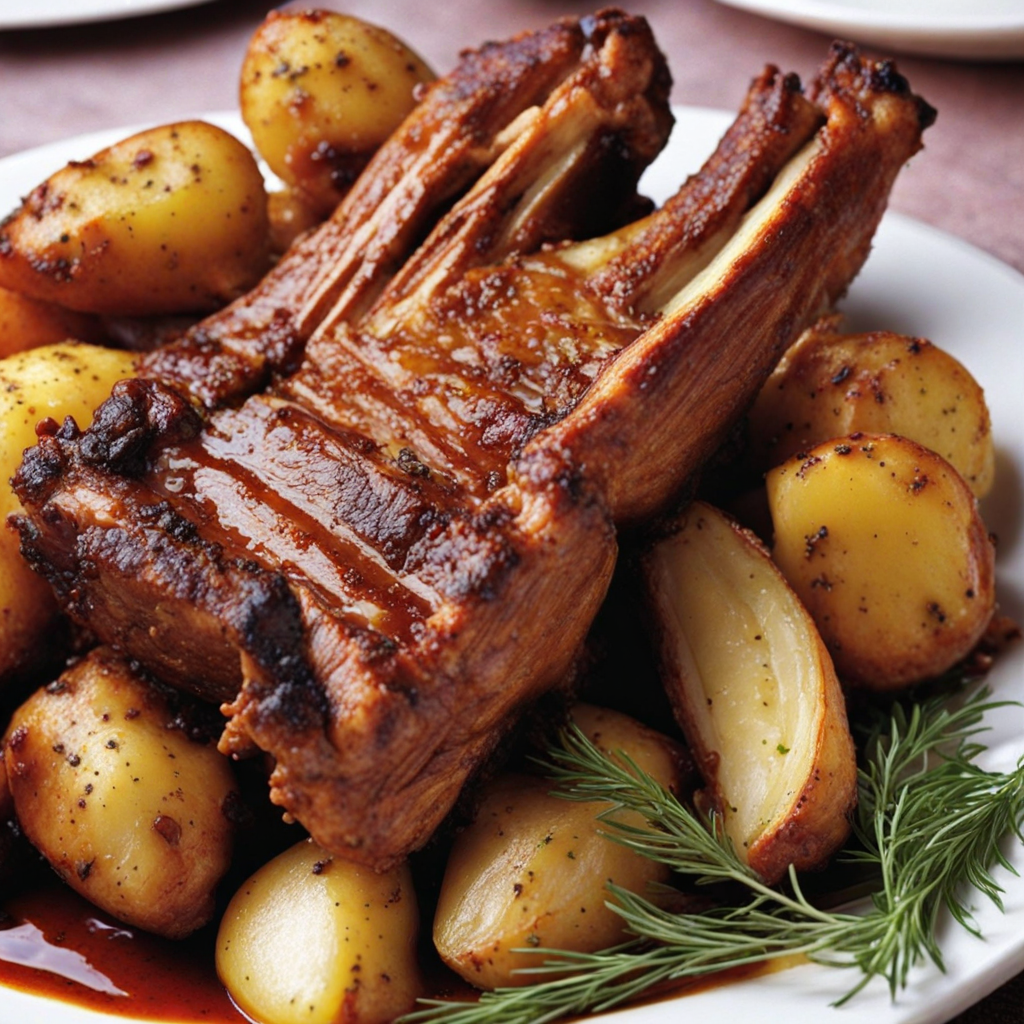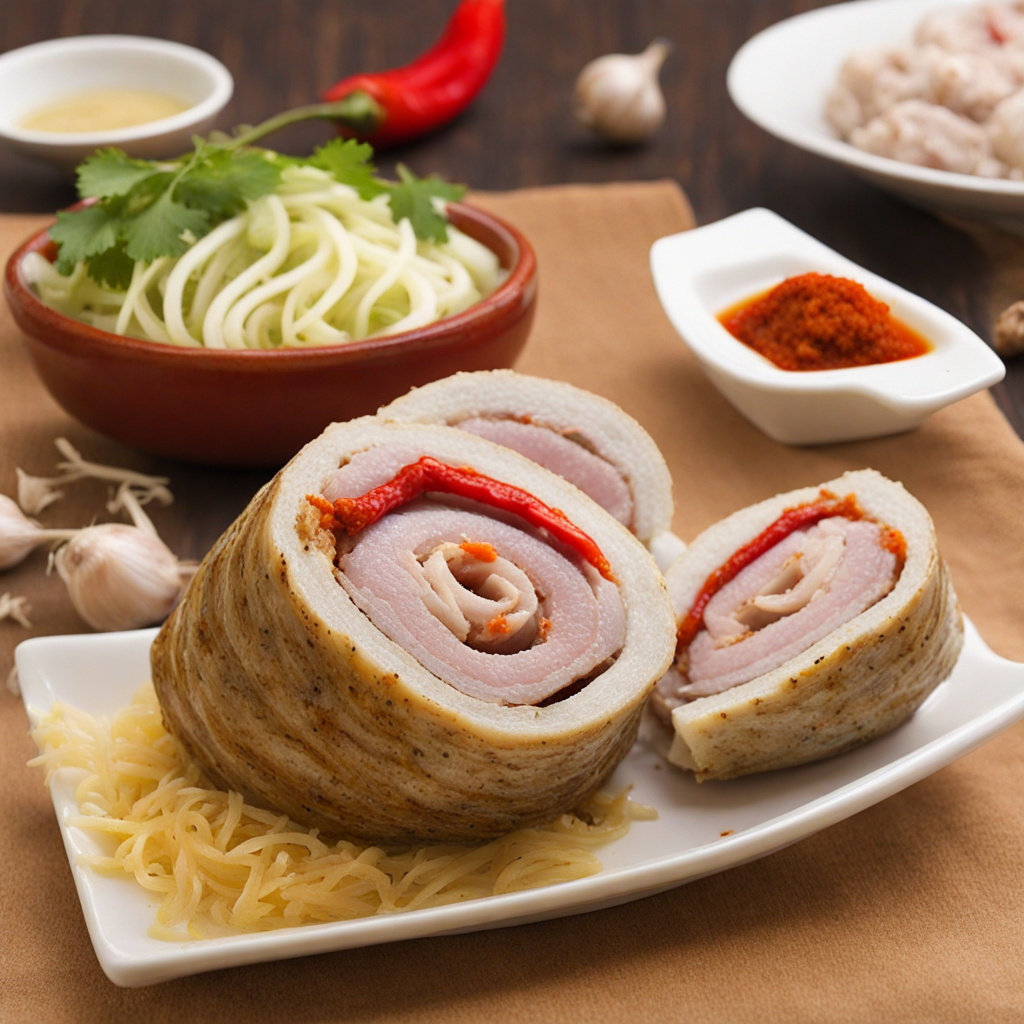Reineta al Horno
Reineta al Horno is a delightful Chilean dish that showcases the flavorful reineta fish, also known as Pacific kingfish. This dish is typically prepared by baking the fish to perfection, allowing its natural flavors to shine through. The reineta has a firm, white flesh that is both tender and flaky, making it a popular choice among seafood lovers. The cooking process enhances its mild taste, which is complemented by a medley of spices and herbs, creating a dish that is both simple and sophisticated. To prepare Reineta al Horno, the fish is often marinated with a blend of garlic, lemon juice, and fresh herbs like parsley and cilantro, which infuse it with vibrant flavors. This marinade not only adds taste but also tenderizes the fish, making each bite a burst of flavor. The dish is typically baked with a layer of sliced onions and tomatoes, which caramelize during cooking, bringing an added sweetness and depth to the overall profile of the dish. Sometimes, a sprinkle of paprika or chili flakes is added to provide a hint of heat, balancing the freshness of the fish. Served hot, Reineta al Horno is often accompanied by traditional sides such as a fresh green salad or a light quinoa dish, enhancing the meal without overpowering the main attraction. This dish embodies the essence of Chilean coastal cuisine, where the ocean's bounty meets the warmth of home cooking. With its delightful combination of flavors and textures, Reineta al Horno is not just a meal; it’s an experience that invites you to savor the rich culinary heritage of Chile.
How It Became This Dish
Reineta al Horno: A Culinary Treasure of Chile Introduction In the coastal regions of Chile, where the Pacific Ocean meets the rugged Andes, a culinary gem known as "Reineta al Horno" has captured the hearts and palates of locals and visitors alike. This dish, featuring the reineta fish baked to perfection, is more than just a meal; it embodies the rich cultural heritage of Chile and reflects the country’s diverse geography and culinary traditions. The Origins of Reineta The reineta, or "Jack mackerel" (Trachurus murphyi), is a fish native to the waters off the coasts of Peru and Chile. Renowned for its mild flavor and firm, white flesh, reineta has become a staple of Chilean cuisine. Historically, the indigenous peoples of the region, including the Mapuche and the Chono, relied on the ocean for sustenance, fishing for various marine species, including the reineta. The arrival of Spanish colonizers in the 16th century introduced new cooking techniques and ingredients, further enriching the culinary landscape. As Chile sought to develop its identity in the wake of colonial rule, local ingredients like reineta became symbols of national pride. The fish was not only a source of nutrition but also a cultural touchstone, celebrated in various regional dishes. The method of baking fish, particularly in the oven (al horno), became popular as it allowed for a combination of flavors from the ocean and land. Cultural Significance Reineta al Horno holds a special place in Chilean culture, particularly in coastal communities where fishing is a way of life. The dish is often prepared during family gatherings, holidays, and festivals, symbolizing unity and the sharing of resources. It is common to find this dish served during national celebrations such as Fiestas Patrias, which commemorate Chile's independence in September. In addition to its role in celebrations, reineta al horno has been embraced by modern Chilean cuisine, often featured in restaurants that highlight traditional dishes with a contemporary twist. Chefs combine the classic recipe with innovative ingredients, such as fresh herbs, citrus, and local vegetables, reflecting a broader trend in Chilean gastronomy that seeks to honor the past while embracing the future. The Development Over Time The preparation of reineta al horno has evolved significantly over the years, influenced by both local traditions and global culinary trends. Historically, the dish was seasoned simply with salt, pepper, and perhaps some local herbs. However, as culinary techniques advanced, the flavors and presentation of reineta al horno began to diversify. In the mid-20th century, Chile experienced a gastronomic renaissance. The influence of European immigrants, particularly Germans and Italians, brought new cooking methods and ingredients to the country. This period saw an increase in the use of butter, cream, and cheese, which found their way into many traditional dishes, including reineta al horno. Modern Chilean chefs began experimenting with these ingredients, creating variations that appealed to changing tastes while still honoring the dish's roots. The 21st century has ushered in a new era of culinary exploration in Chile. With the rise of the farm-to-table movement and the emphasis on sustainability, many chefs are returning to traditional methods of preparation while sourcing ingredients locally. This has prompted a resurgence in the appreciation for reineta al horno, as cooks look to highlight the freshness of the fish and the flavors of the surrounding land. Seasonal vegetables, such as tomatoes, onions, and bell peppers, are often roasted alongside the fish, creating a colorful and nutritious dish. Regional Variations While reineta al horno is beloved throughout Chile, regional variations exist that reflect local ingredients and traditions. In the northern coastal regions, for instance, the dish may incorporate spices and ingredients influenced by the Peruvian culinary tradition, such as aji peppers or lime. In the south, where the climate is cooler, the dish might be served with a rich, creamy sauce, showcasing the abundance of dairy products in the region. In the capital city of Santiago, chefs have taken reineta al horno to new heights, often presenting it in upscale restaurants with gourmet flair. Here, the fish may be paired with unique sauces made from local fruits like mango or passionfruit, creating a fusion of flavors that pays homage to both traditional and modern Chilean cuisine. Sustainability and the Future of Reineta al Horno As global awareness of sustainability and environmental issues increases, the fishing industry in Chile is facing scrutiny. Overfishing and environmental changes threaten the populations of reineta and other marine species. In response, many chefs and consumers are advocating for responsible fishing practices and sustainable sourcing. This movement is not only about preserving the fish but also about maintaining the cultural significance of dishes like reineta al horno. Today, many restaurants emphasize the importance of sourcing their reineta from certified sustainable fisheries. This commitment to sustainability ensures that future generations can continue to enjoy this cherished dish while supporting the health of the ocean. Conclusion Reineta al horno is more than just a culinary dish; it is a vibrant reflection of Chile's cultural heritage, geographical diversity, and evolving culinary landscape. From its origins among indigenous peoples to its modern interpretations in upscale restaurants, reineta al horno tells a story of connection—between the land and sea, the past and present, and the community and the individual. As Chile continues to embrace its culinary roots while navigating the complexities of a globalized world, reineta al horno will undoubtedly remain a beloved dish, cherished for its flavors and the rich history it represents. In every bite, one can taste the essence of Chile—a country where tradition and innovation coexist harmoniously, and where the ocean’s bounty continues to inspire generations of cooks and food lovers alike.
You may like
Discover local flavors from Chile







